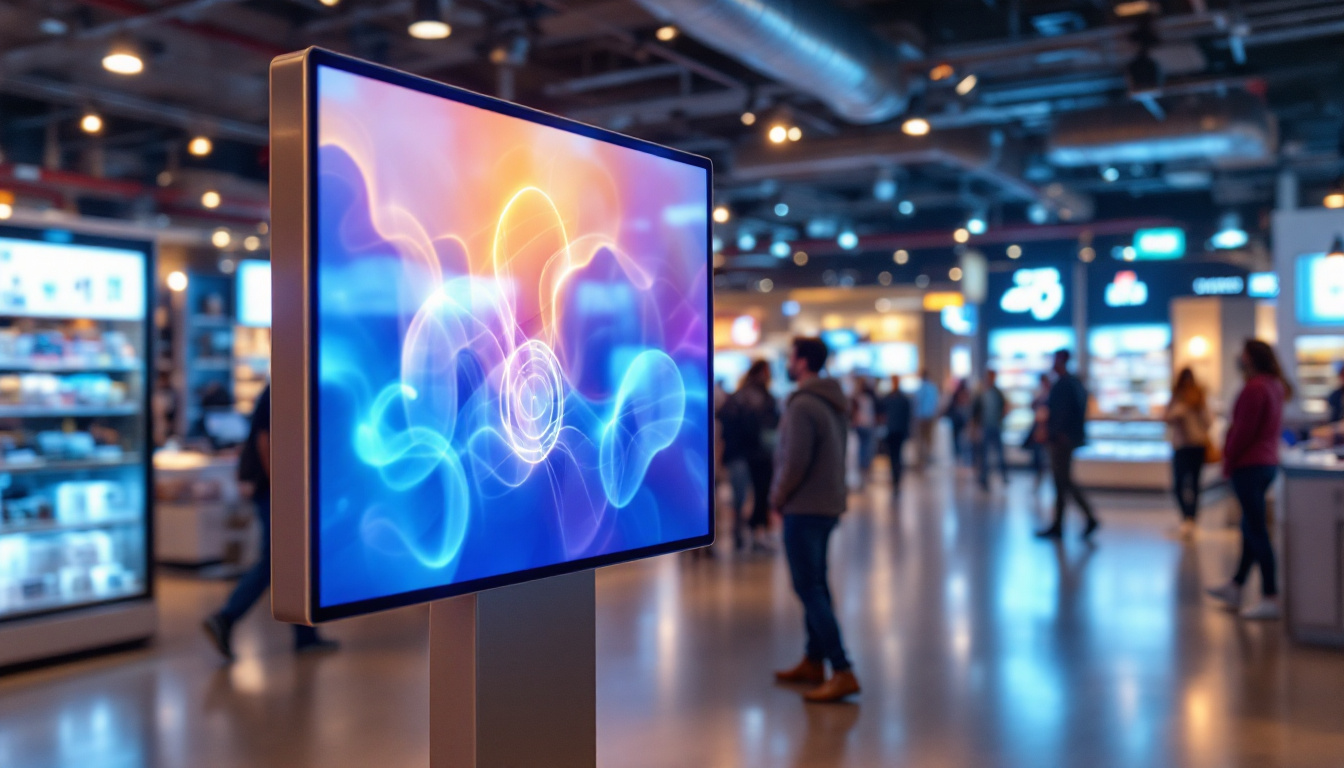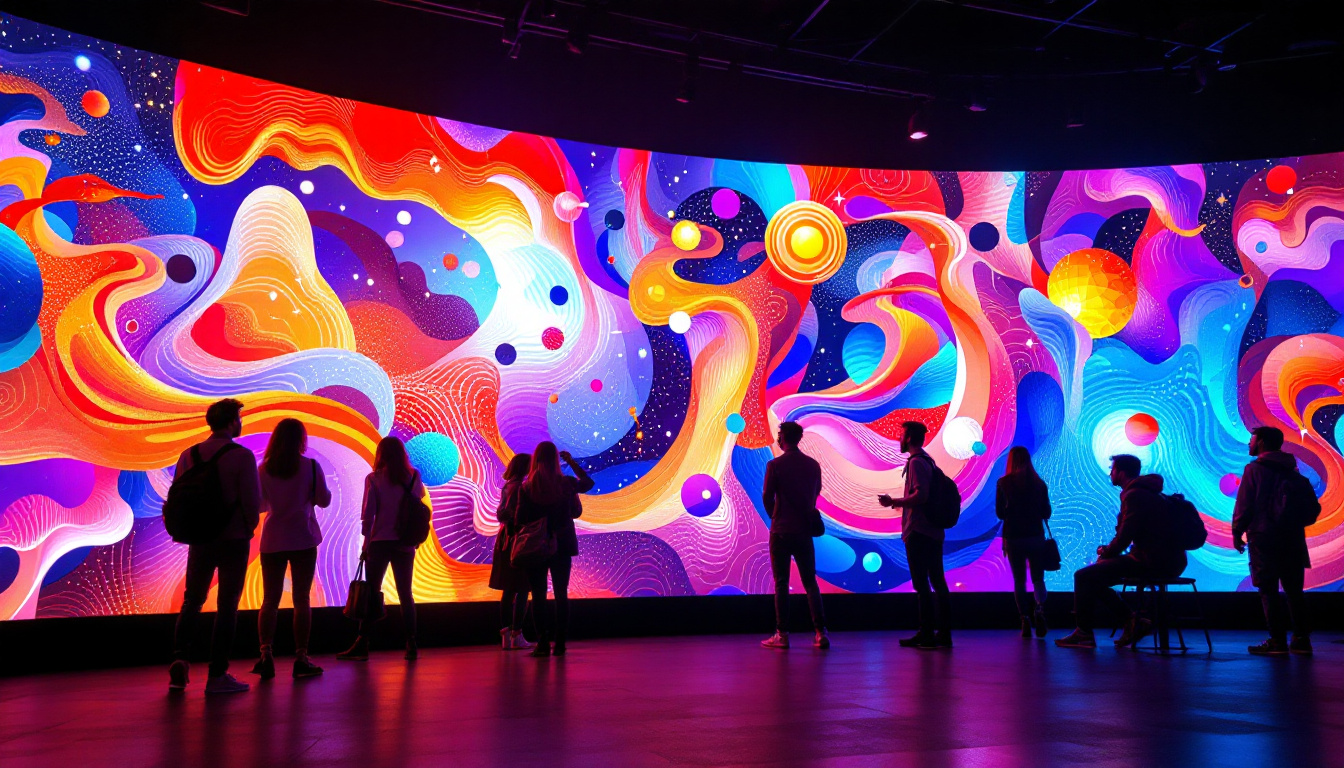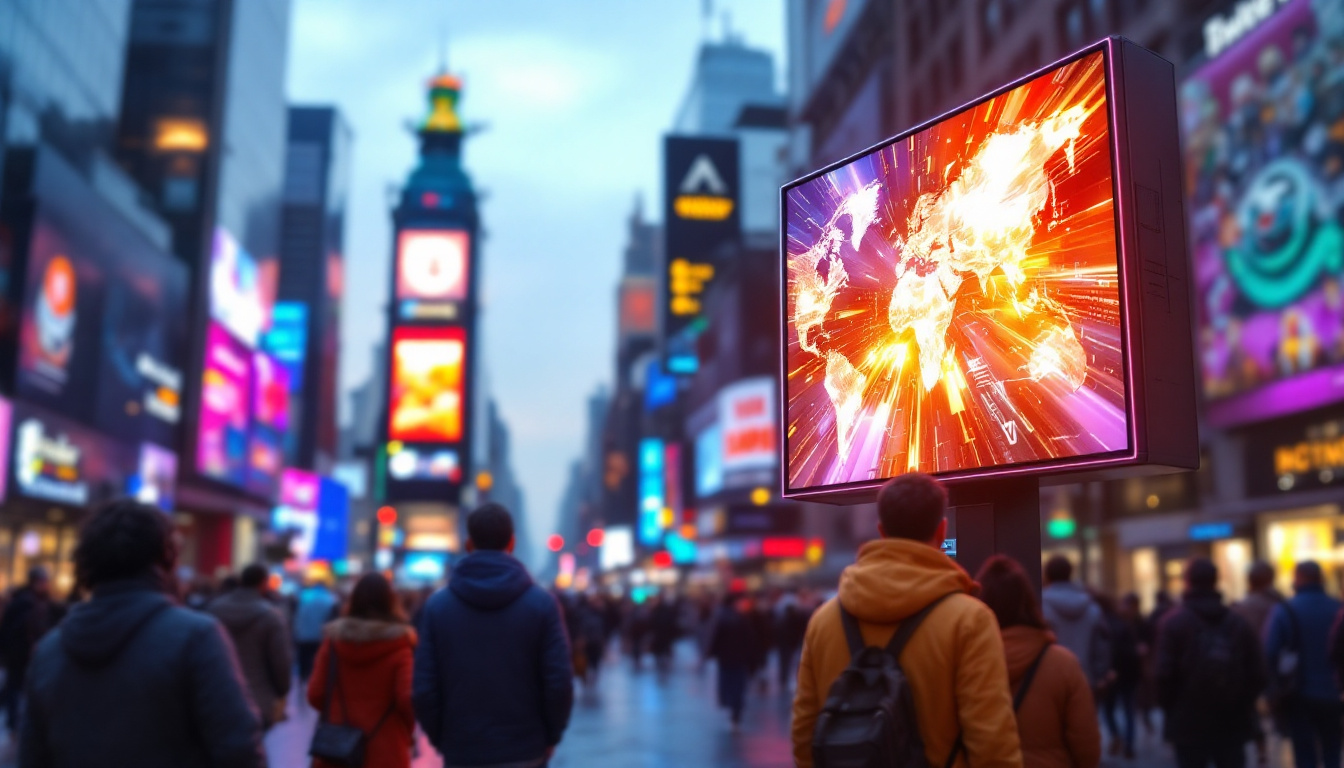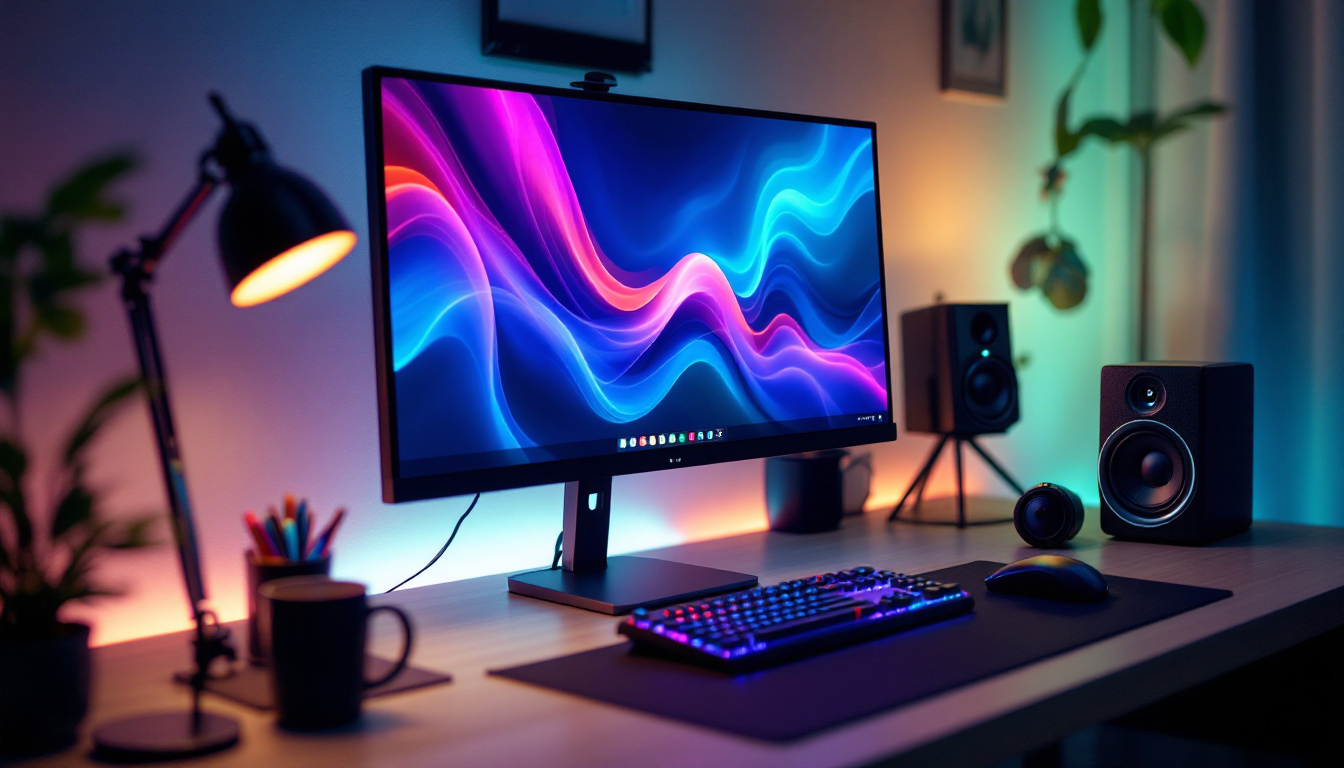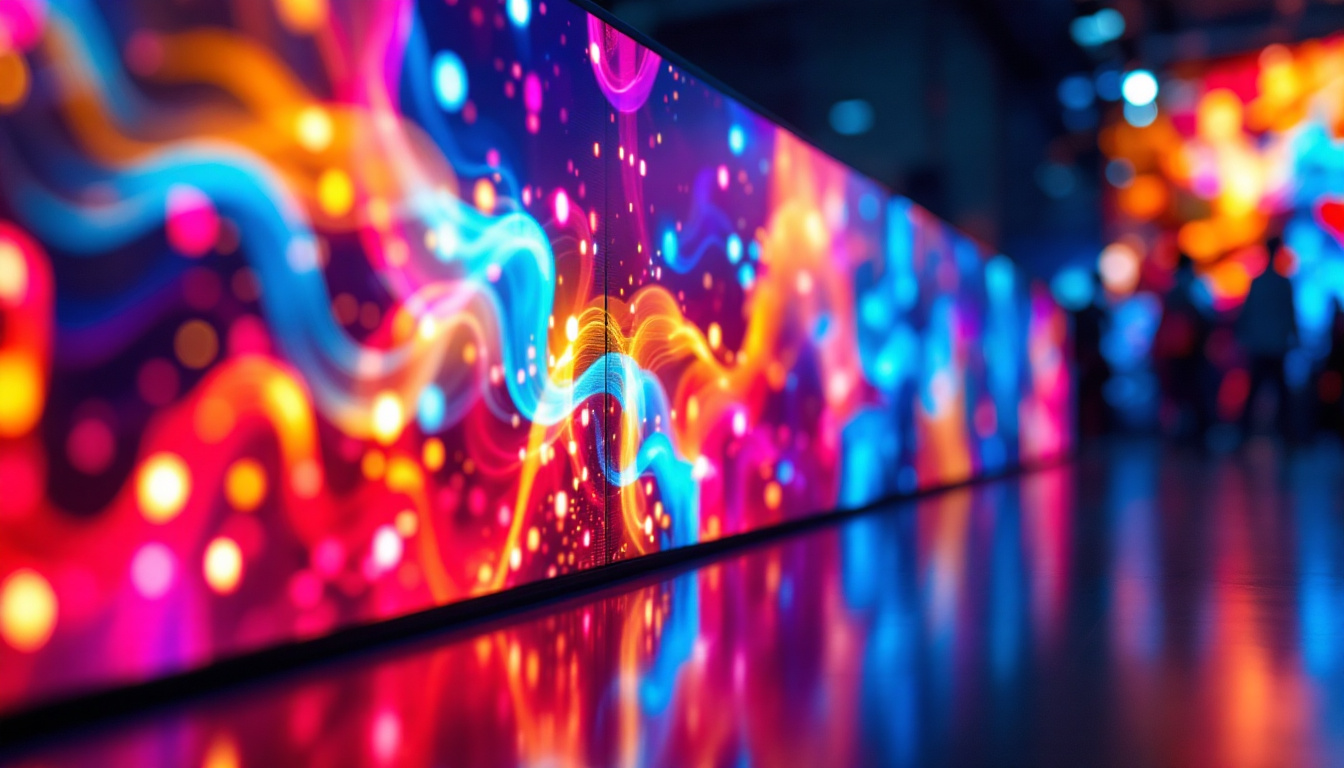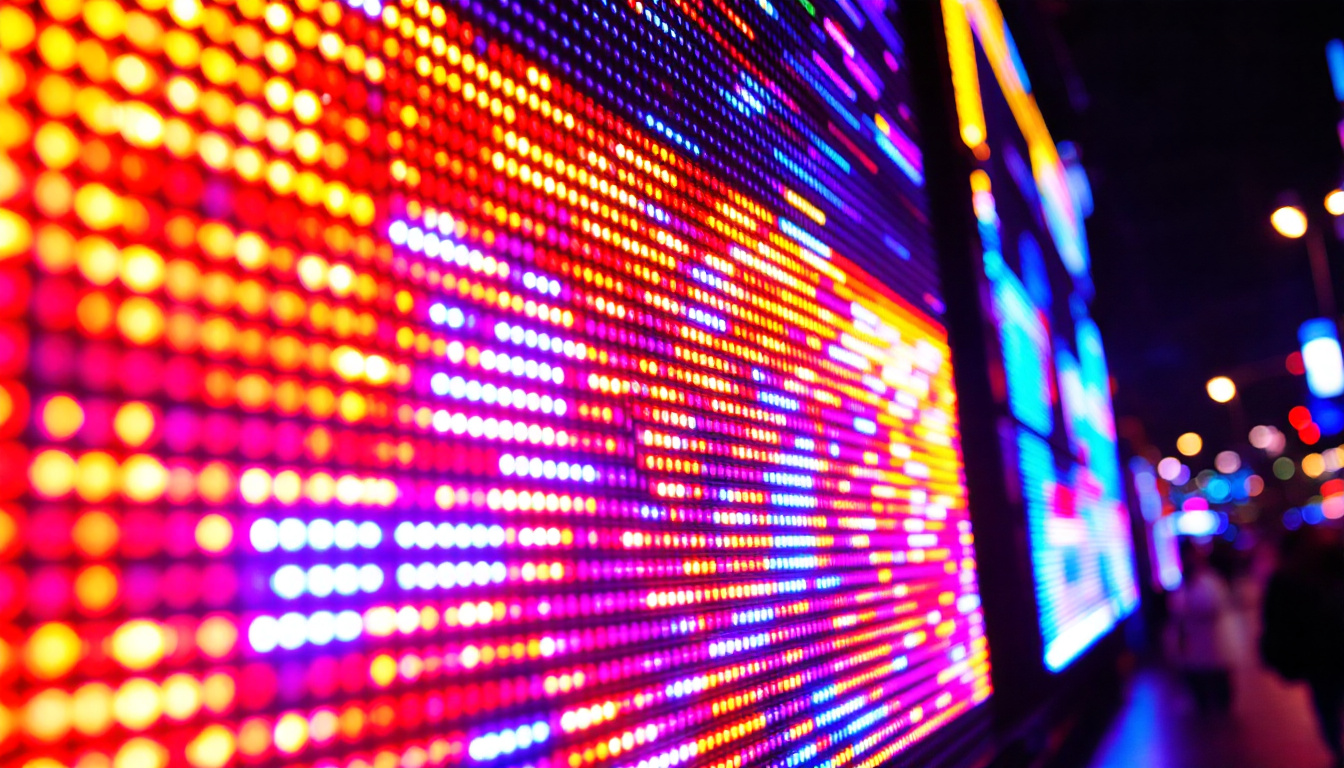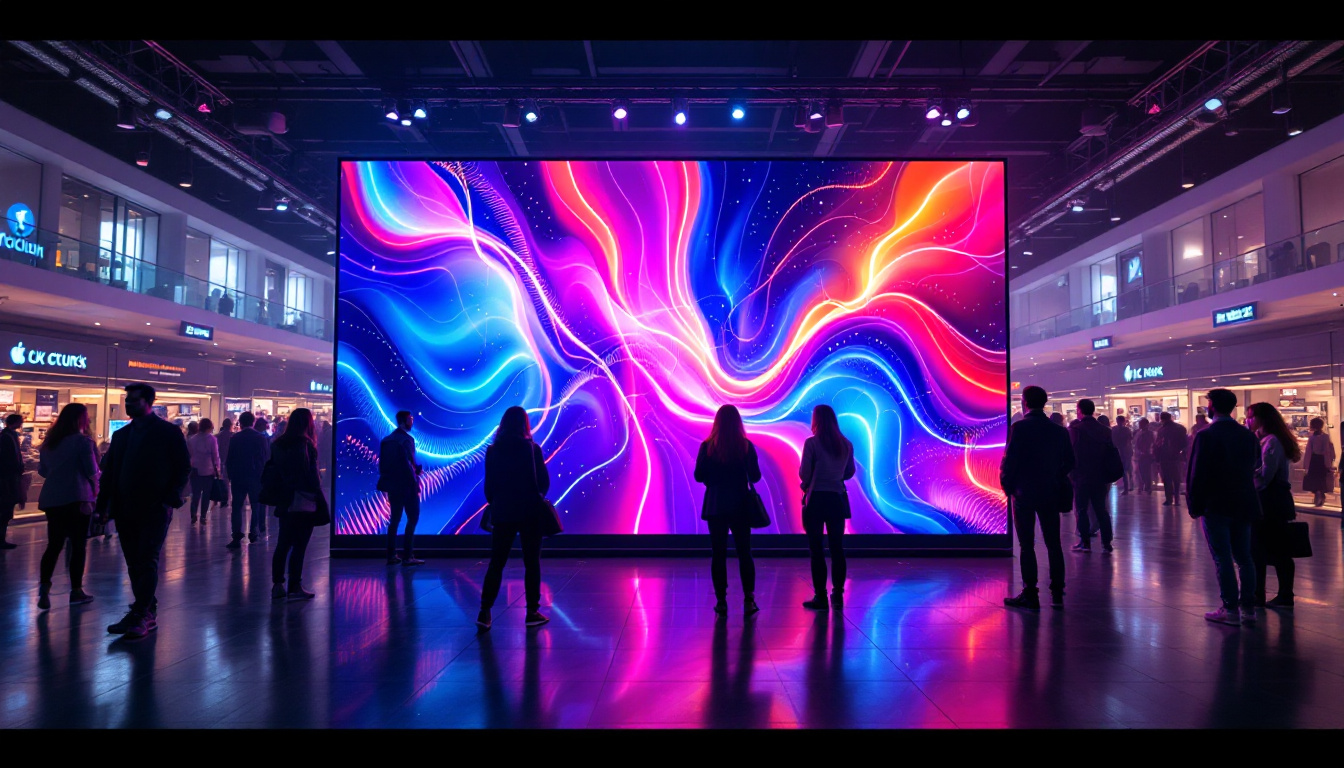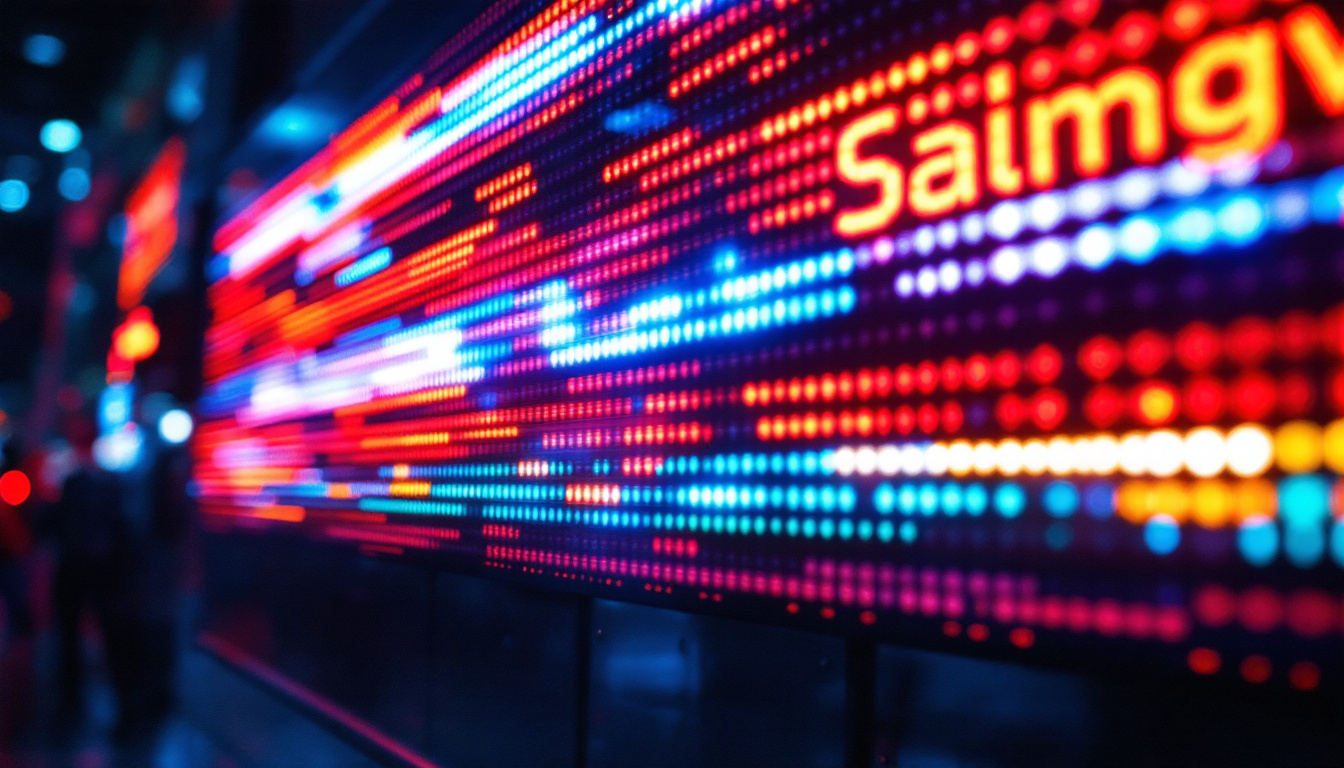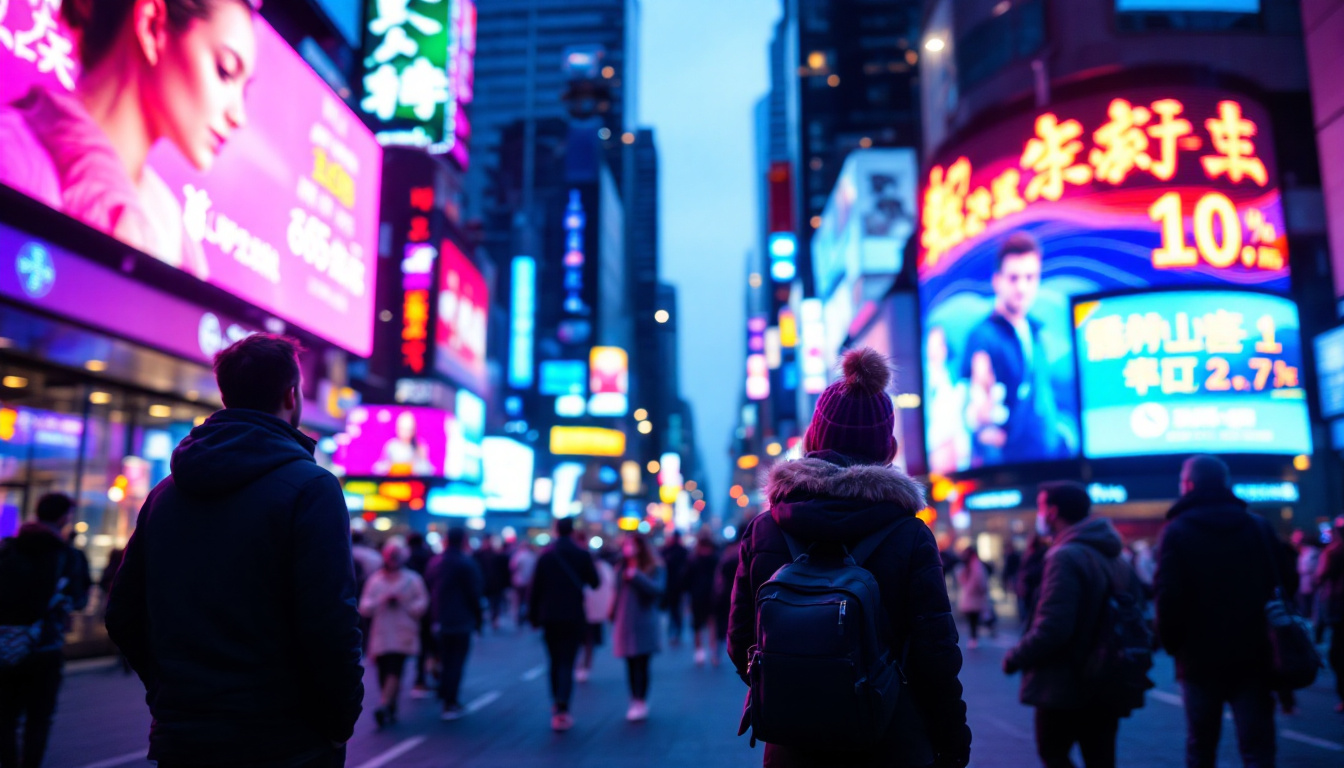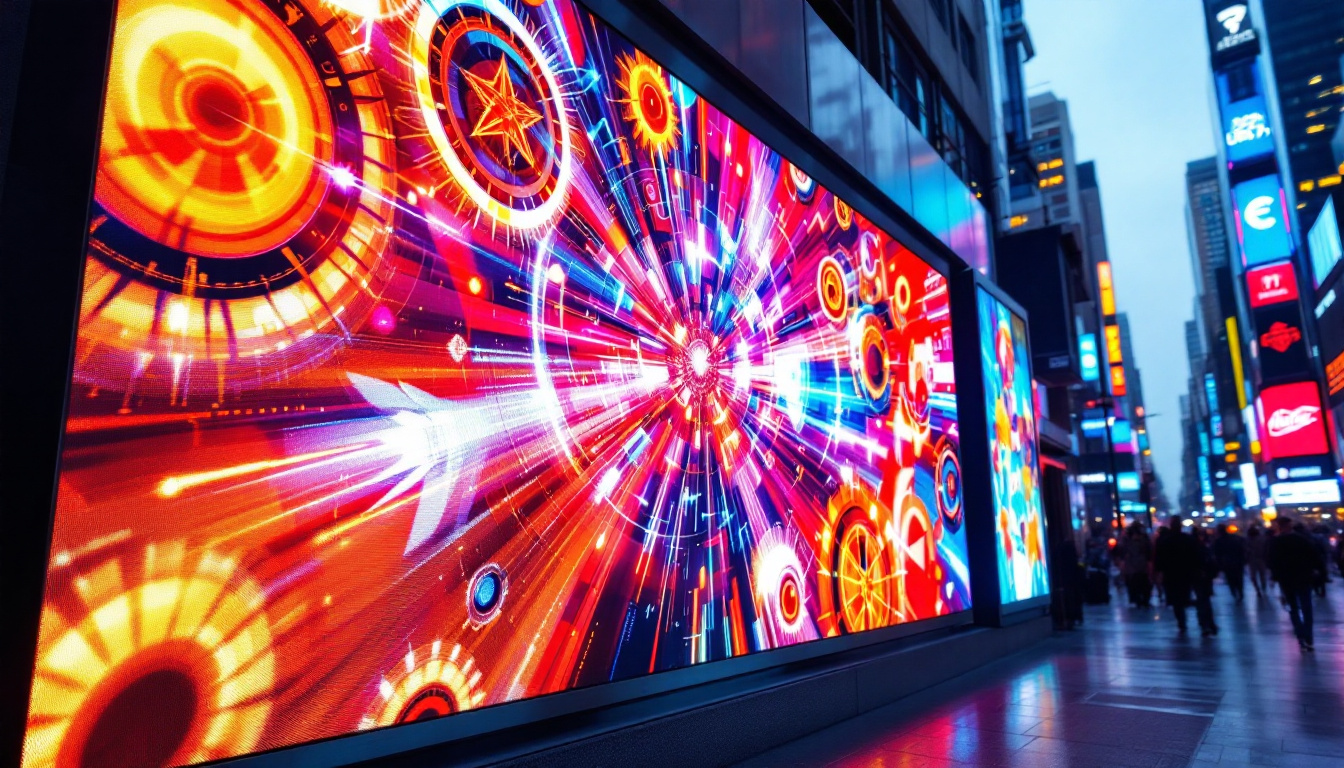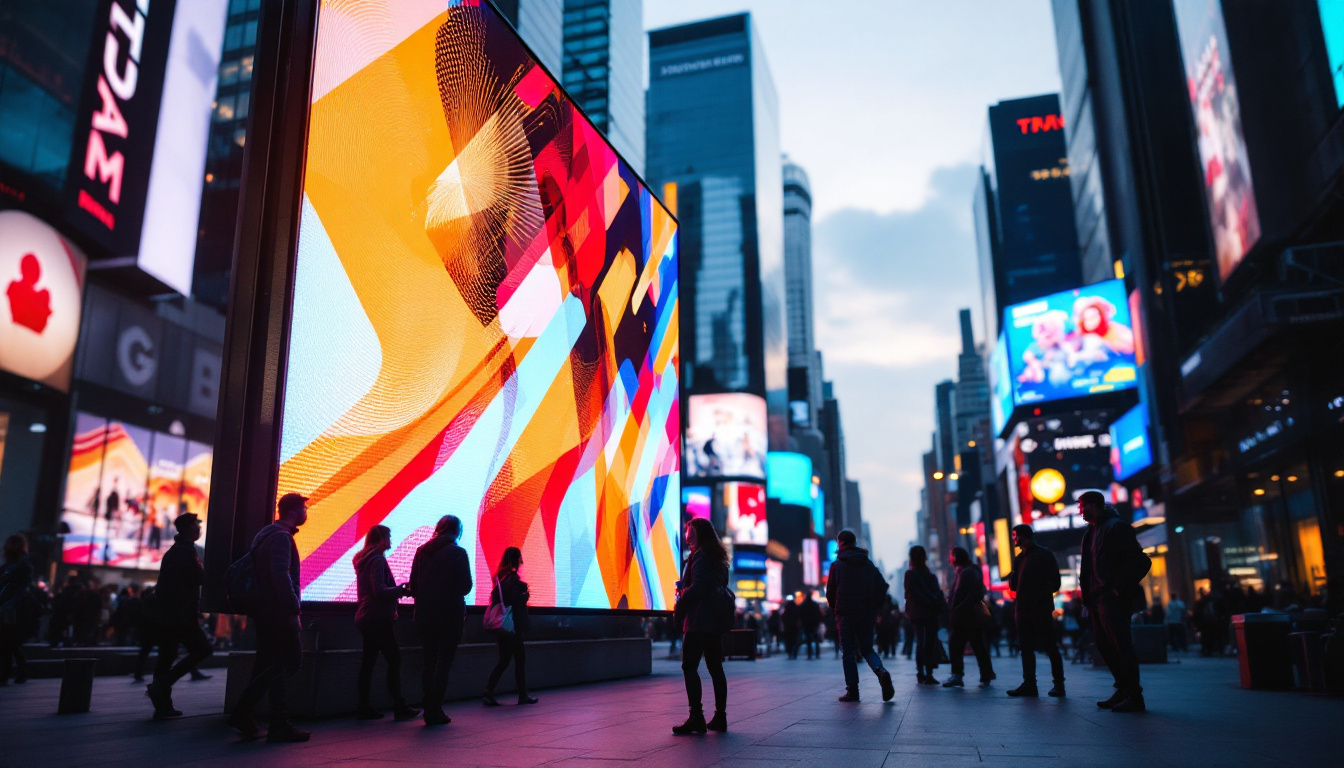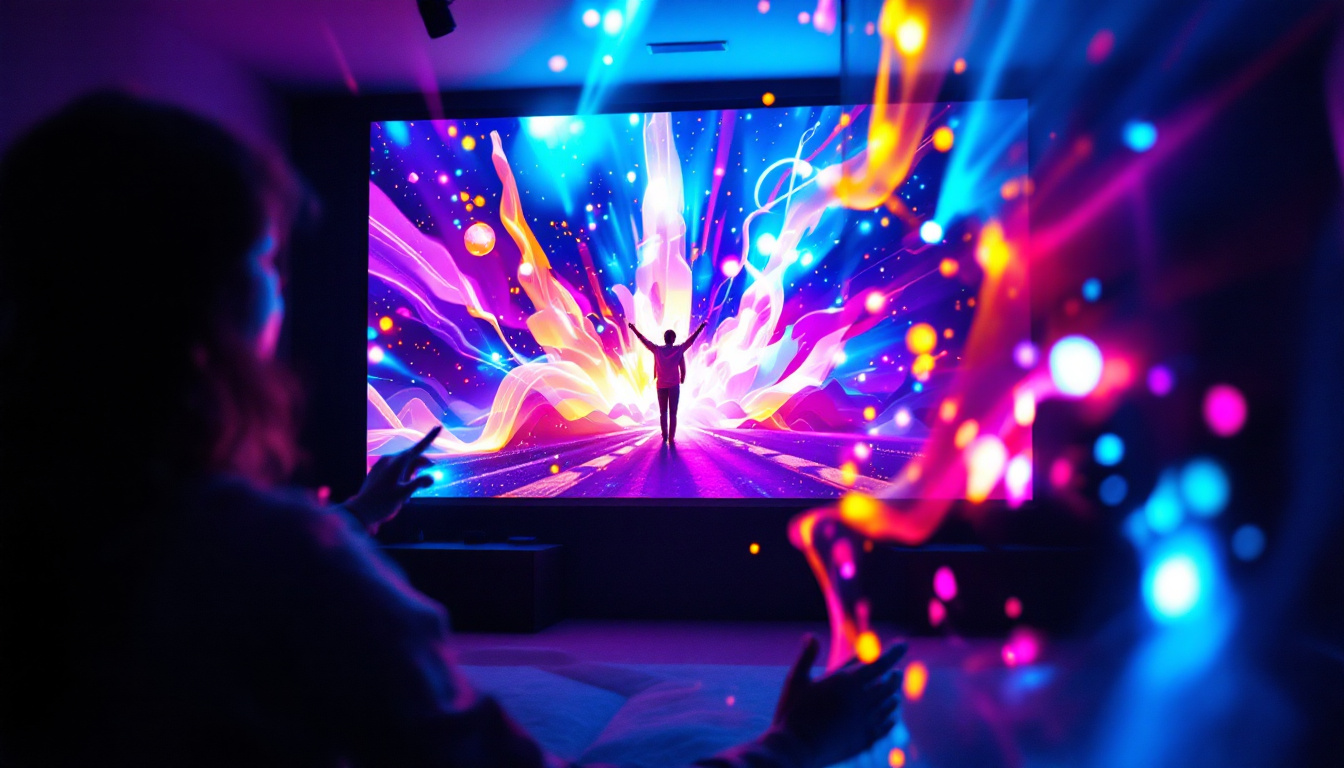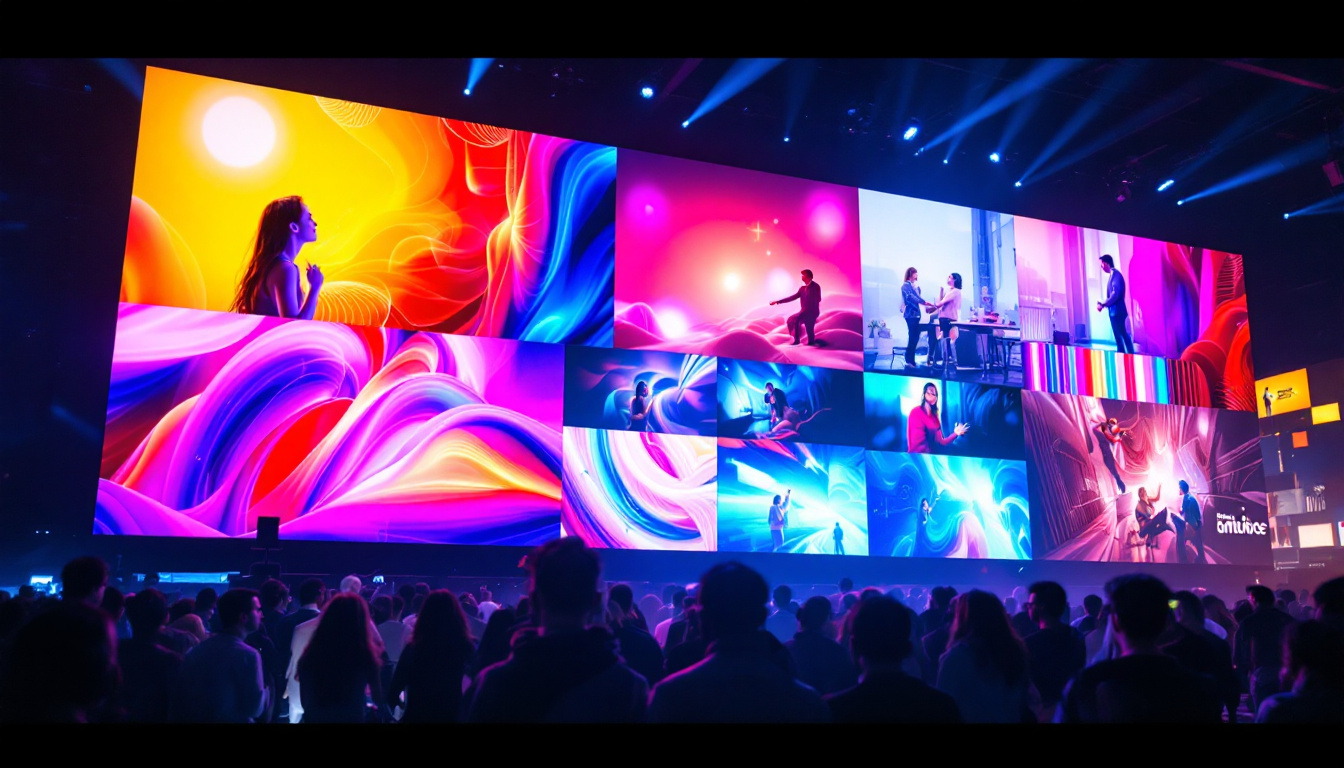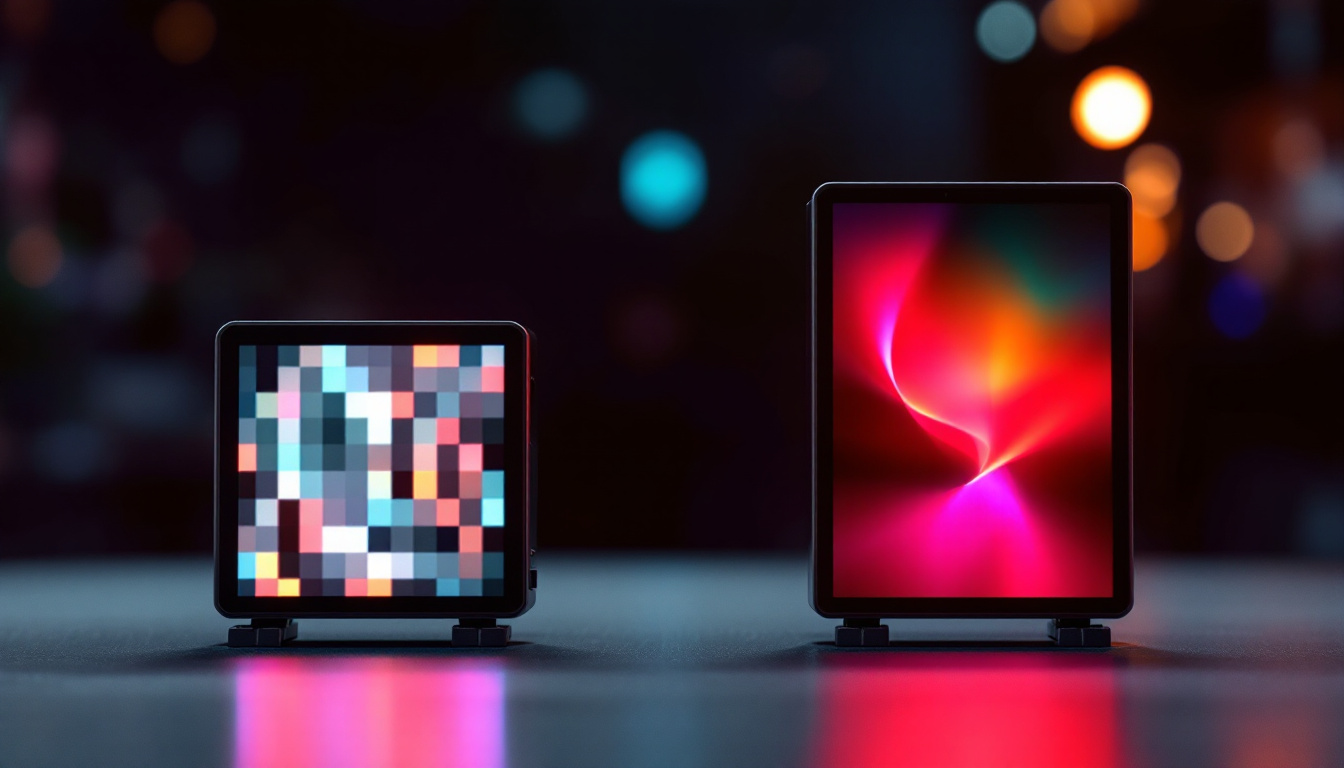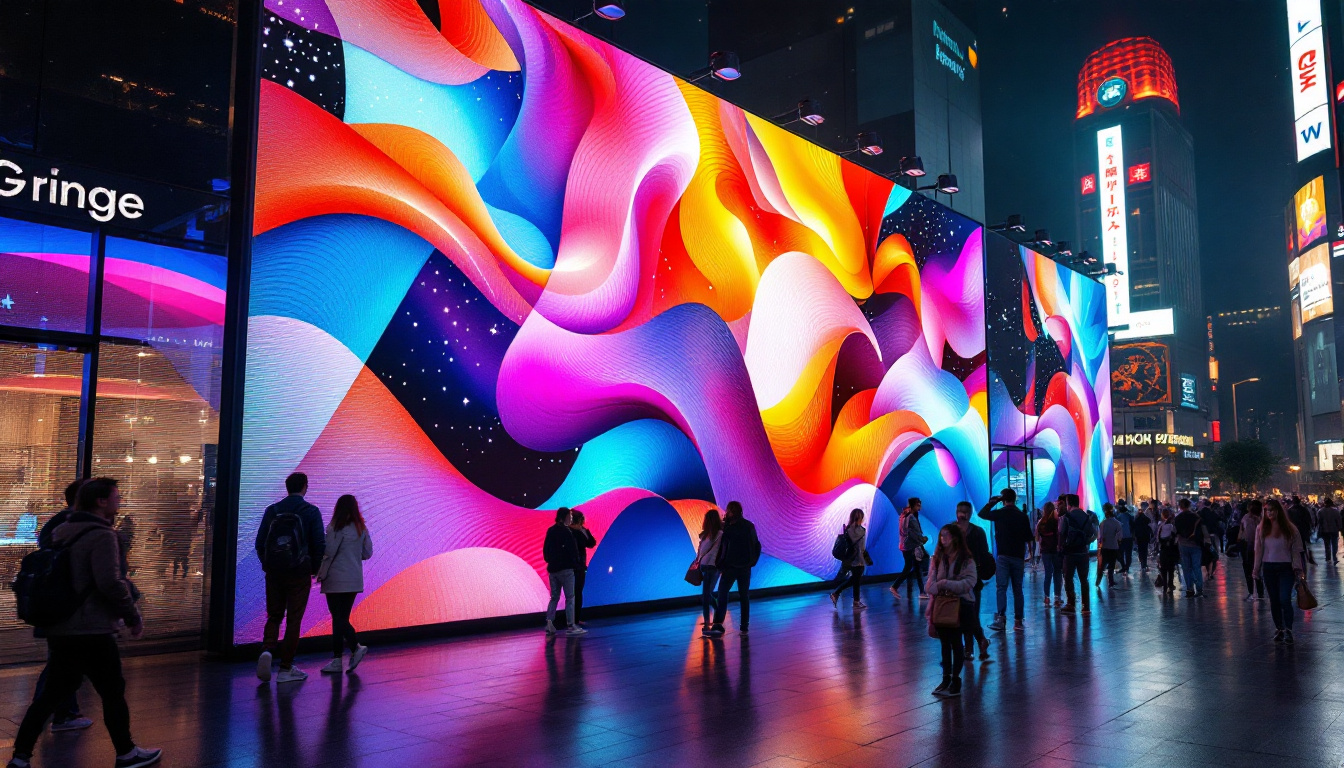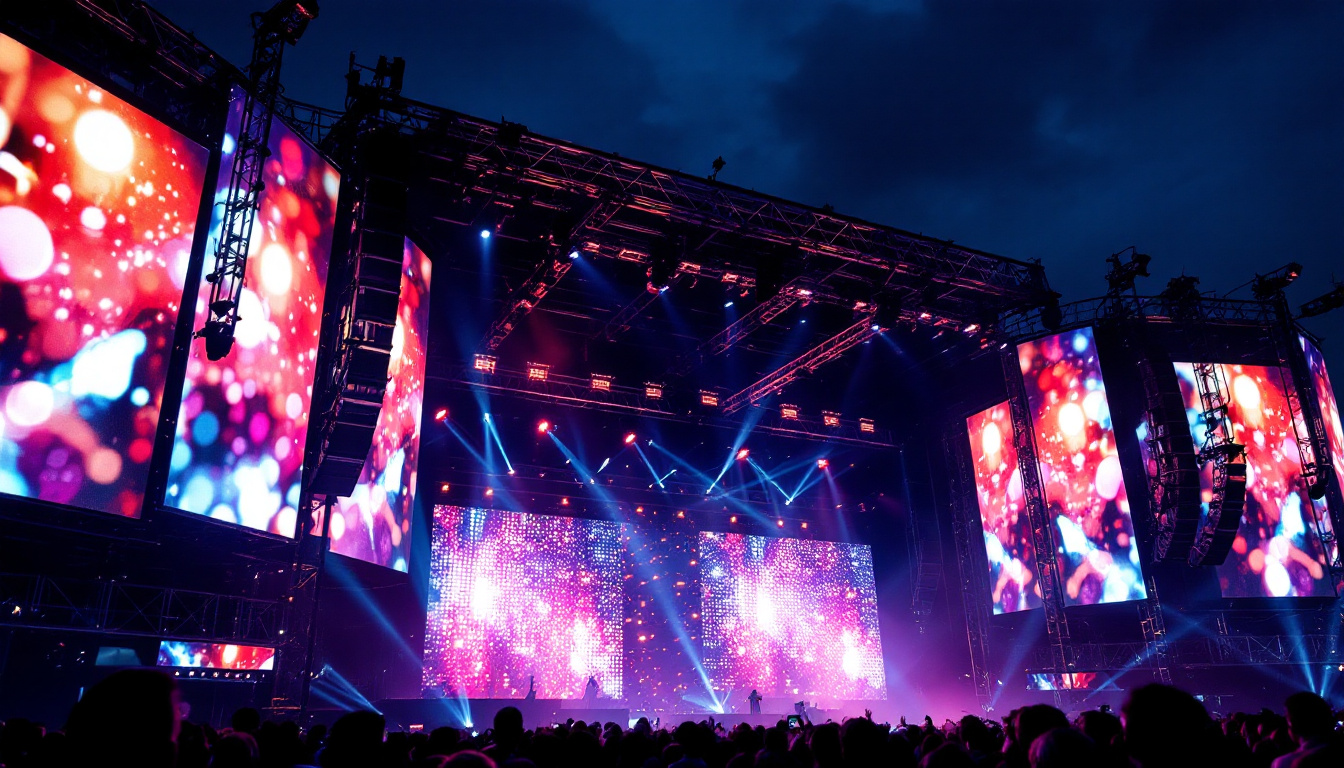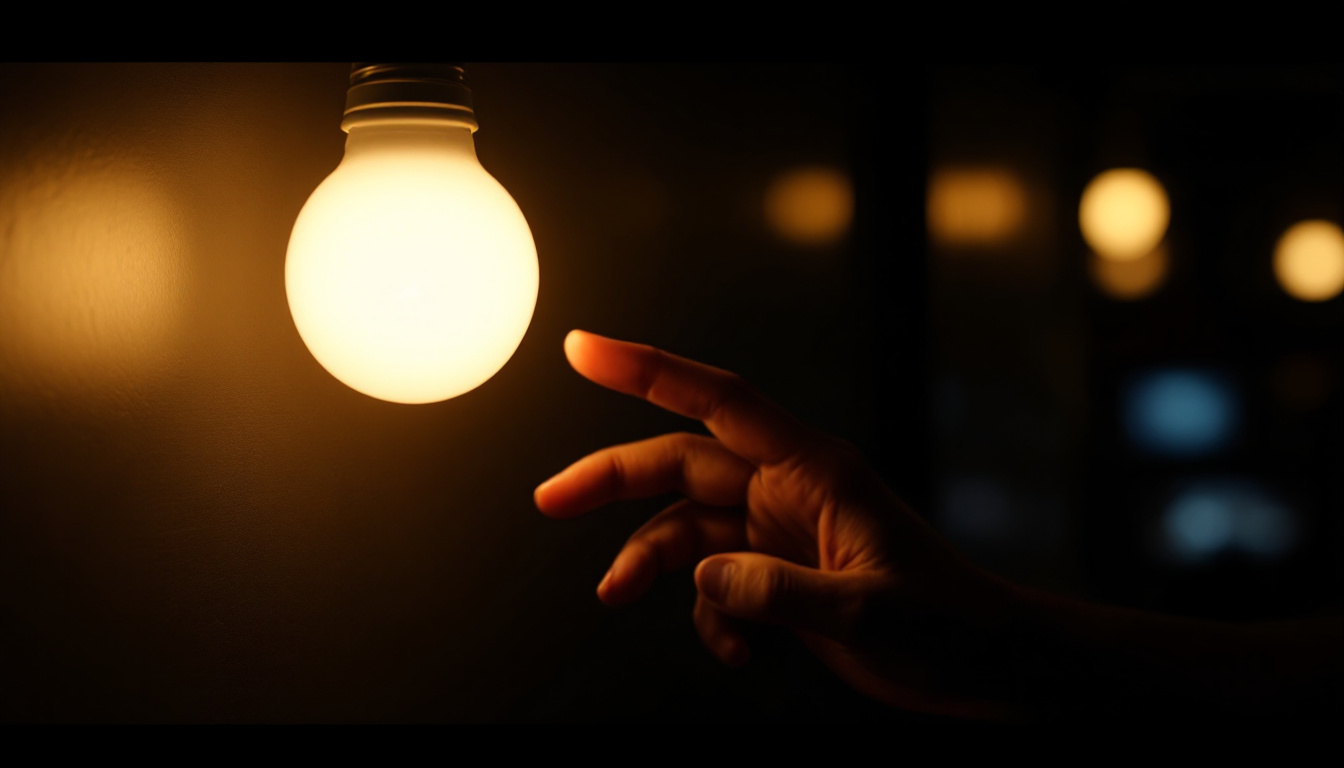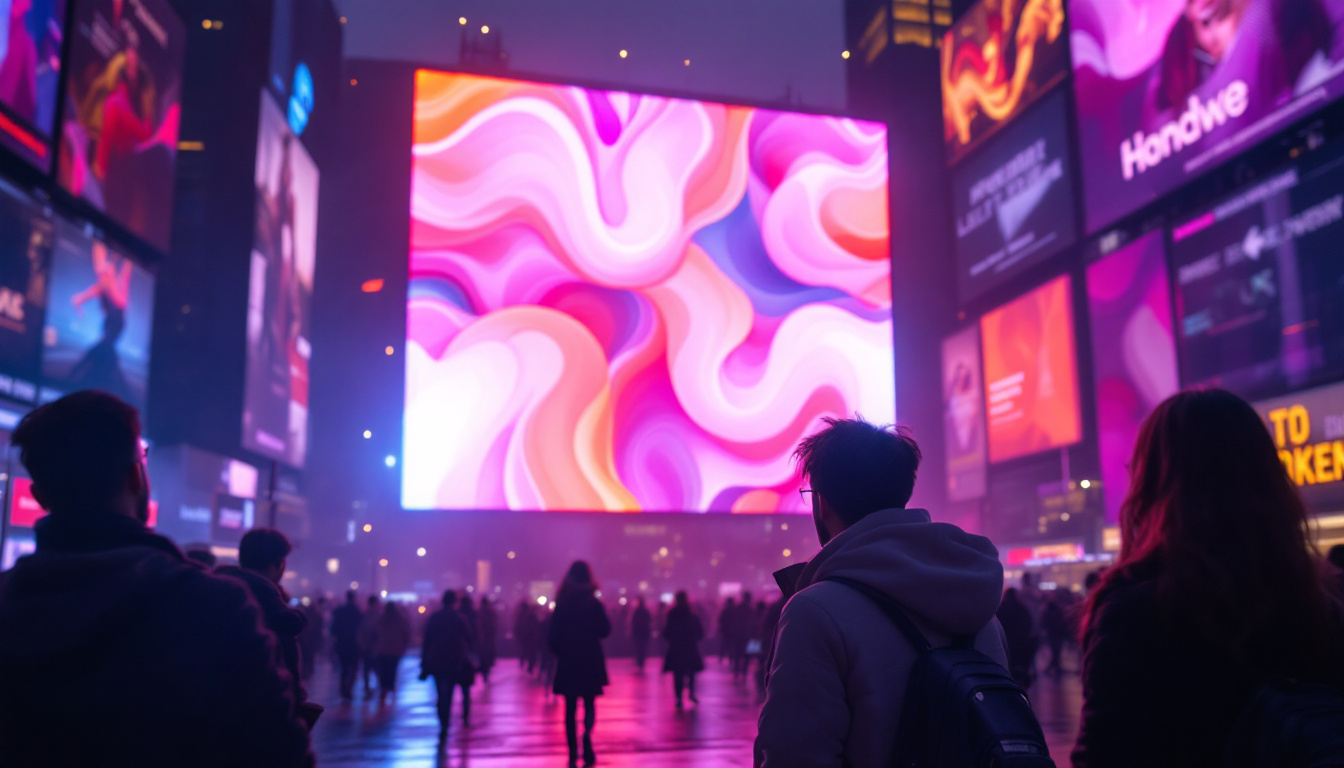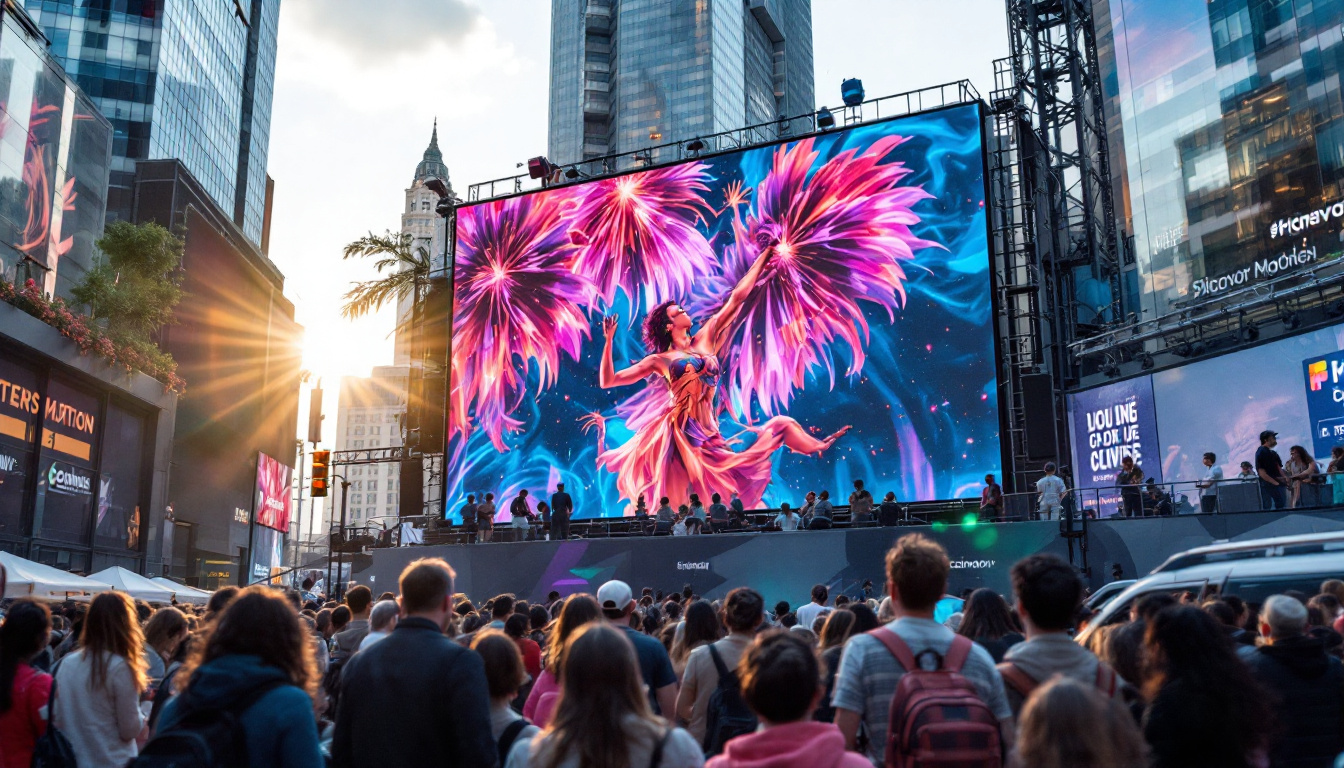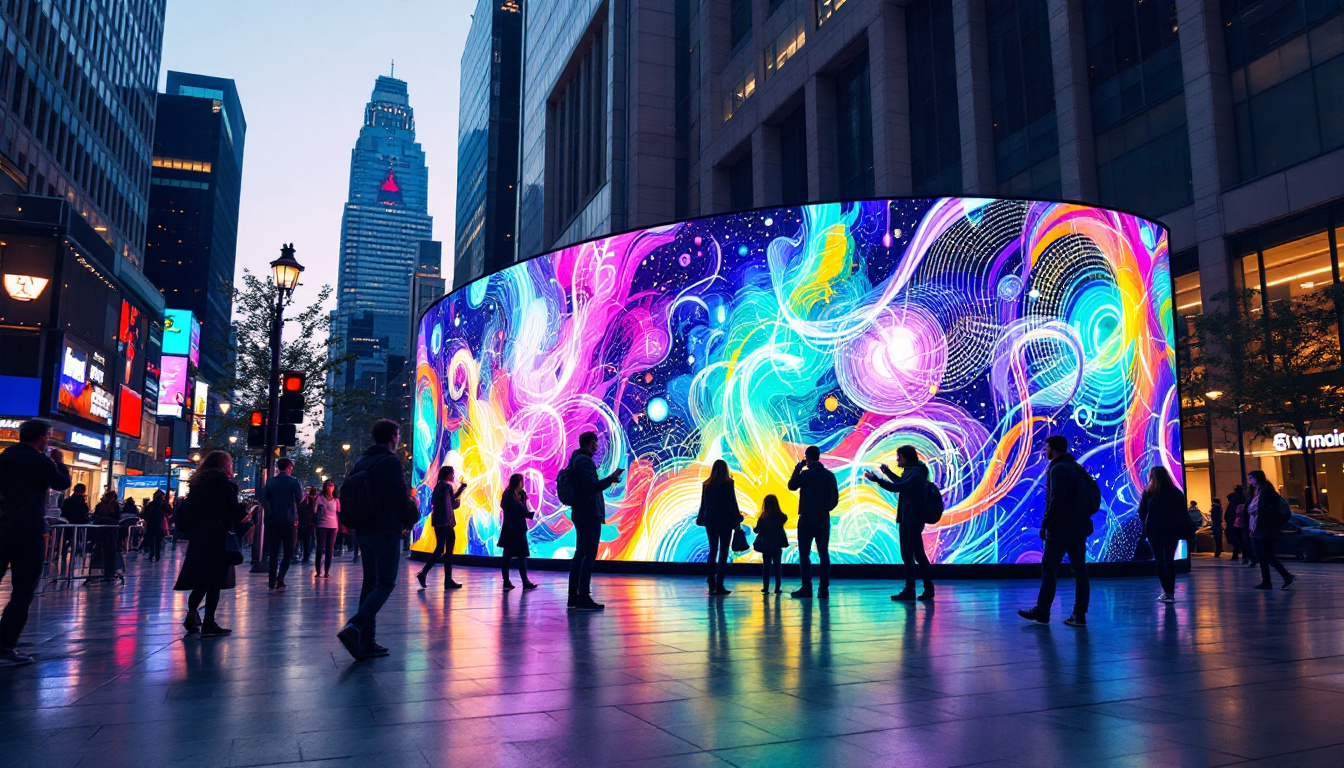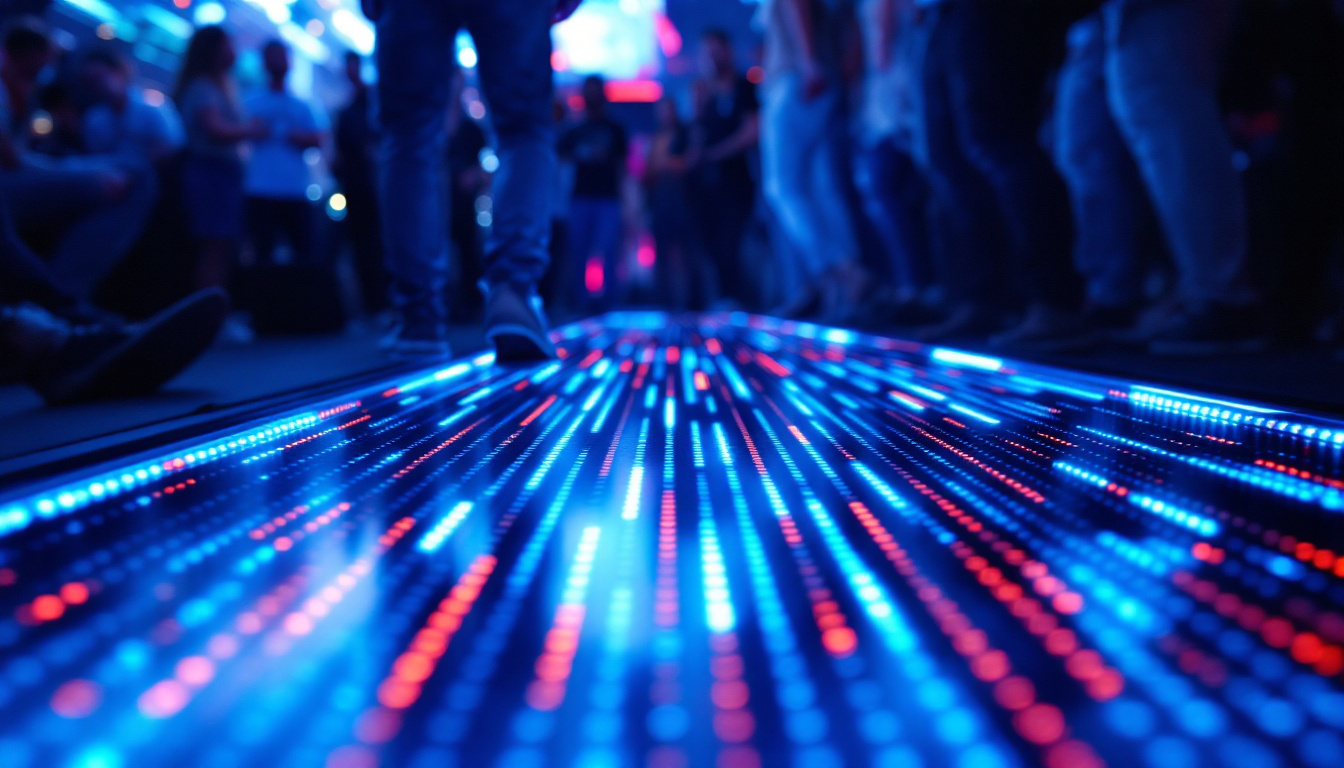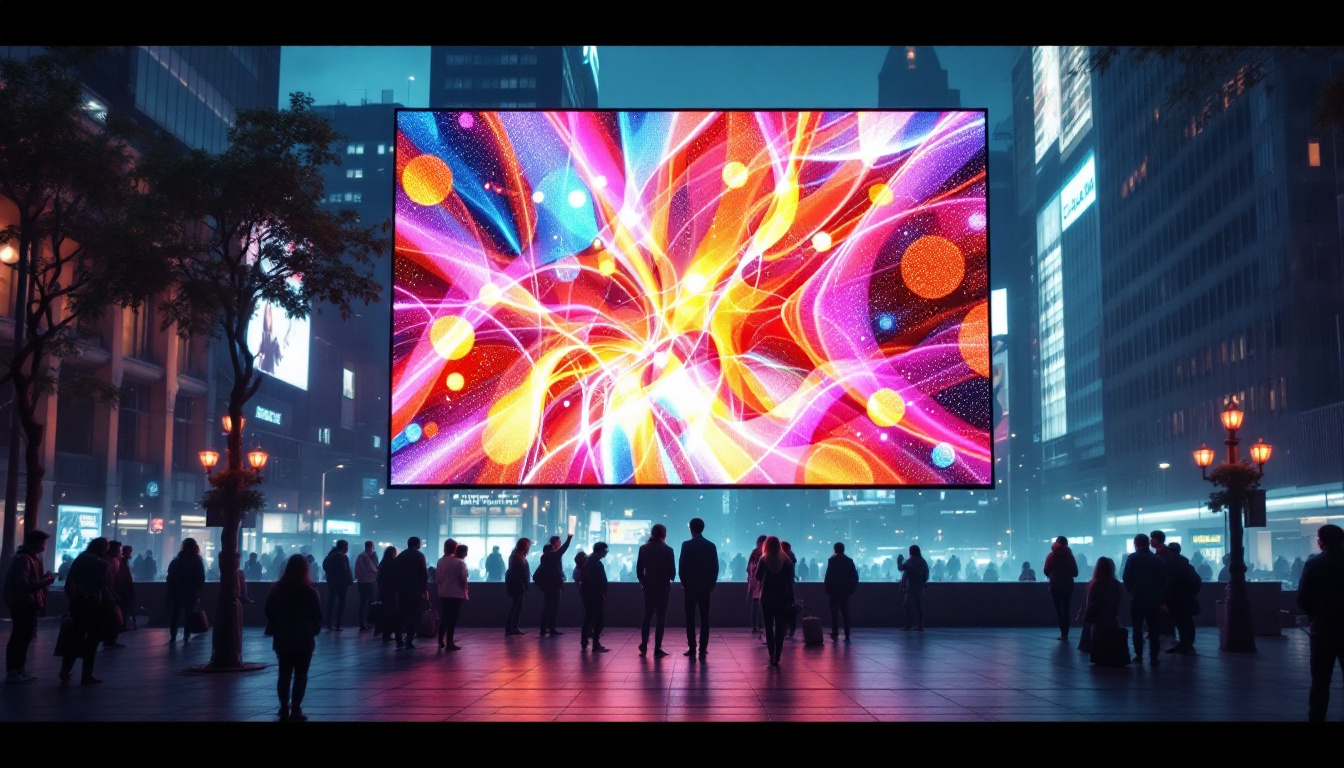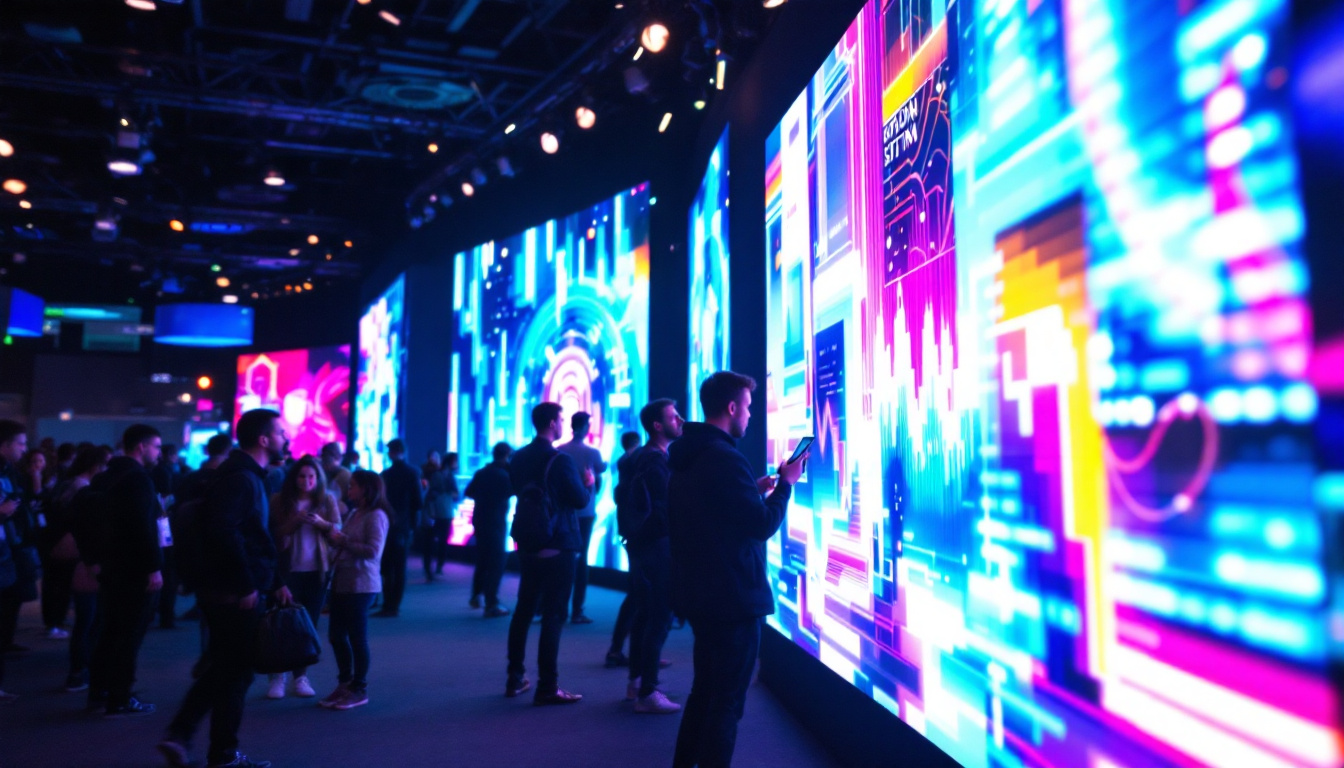In the modern world of advertising and information dissemination, LED displays have become a pivotal tool. Their vibrant colors, high visibility, and versatility make them an attractive option for businesses and organizations looking to capture attention. This article delves into the intricacies of LED stand displays, exploring their technology, applications, benefits, and considerations for selection.
Understanding LED Technology
LED, or Light Emitting Diode, technology has revolutionized the way visual content is presented. Unlike traditional display technologies, LEDs offer several advantages that make them particularly suitable for various applications. Their energy efficiency, longevity, and compact size have made them the go-to choice for everything from home lighting solutions to large-scale advertising displays.
How LEDs Work
At its core, an LED is a semiconductor device that emits light when an electric current passes through it. The color of the light emitted depends on the materials used in the semiconductor. This fundamental principle allows for a wide range of colors and brightness levels, making LEDs highly versatile for display purposes. The efficiency of LEDs is remarkable; they convert a higher percentage of electricity into visible light compared to incandescent bulbs, which waste a significant portion of energy as heat.
LEDs are typically arranged in grids to form displays. Each individual LED can be controlled independently, allowing for dynamic content that can change in real-time. This capability is particularly beneficial for advertising, where messages can be updated frequently to reflect promotions or events. Additionally, the rapid response time of LEDs enables them to display vibrant animations and videos, enhancing viewer engagement and making them a popular choice for entertainment venues and public displays.
Types of LED Displays
LED displays come in various types, each designed for specific applications. The most common types include:
- Indoor LED Displays: These displays are designed for use in controlled environments, such as shopping malls, conference rooms, and theaters. They typically have a higher pixel density, providing clearer images and text at closer viewing distances. This makes them ideal for presentations and events where detail is crucial.
- Outdoor LED Displays: Built to withstand the elements, outdoor displays are larger and more robust. They feature lower pixel density to ensure visibility from greater distances, making them ideal for billboards and stadiums. These displays often come with protective coatings to shield against rain, dust, and UV rays, ensuring durability and longevity.
- Transparent LED Displays: This innovative technology allows for displays that can be seen through, making them perfect for storefronts and exhibitions where visibility is key. They create a captivating effect, allowing brands to showcase products behind the screen while still delivering dynamic digital content.
In addition to these common types, there are also specialized LED displays such as flexible LED screens that can be curved or shaped to fit unique spaces, and high-definition LED walls that provide stunning visuals for concerts and events. The evolution of LED technology continues to push boundaries, enabling new possibilities in design and functionality that were previously unimaginable. As the technology advances, we can expect even more innovative applications that will further enhance our visual experiences in everyday life.
Applications of LED Stand Displays
LED stand displays are utilized across a variety of sectors, each leveraging the technology’s unique advantages. From retail to corporate environments, the applications are vast and varied.
Retail and Advertising
In retail, LED stand displays serve as powerful marketing tools. They can showcase products, promotions, and brand messages in eye-catching formats. Their ability to display dynamic content means that retailers can easily update their messages to reflect current trends or seasonal sales.
Moreover, the bright and vibrant nature of LED displays helps to attract foot traffic, drawing potential customers into stores. This capability is particularly effective in high-traffic areas where competition for attention is fierce. Retailers can also leverage the flexibility of LED displays to experiment with different advertising strategies, such as countdowns for limited-time offers or interactive content that engages customers directly. This adaptability not only enhances customer experience but also provides valuable insights into consumer behavior through analytics.
Corporate and Event Use
In corporate settings, LED stand displays are often used for presentations, conferences, and trade shows. Their high visibility ensures that information is easily seen by large audiences, making them ideal for displaying key messages, logos, and other important content.
During events, these displays can be used to create immersive experiences, enhancing the overall atmosphere and engagement. They can also serve as information points, providing attendees with schedules, maps, and other relevant details. Additionally, the integration of multimedia elements, such as videos and animations, can elevate the impact of presentations, making them more memorable and effective. Companies can also utilize LED displays for live social media feeds, allowing real-time interaction with attendees and fostering a sense of community during events.
Public Information and Wayfinding
LED displays play a crucial role in public information systems, such as transportation hubs and municipal buildings. They can provide real-time updates on schedules, alerts, and directions, ensuring that the public is well-informed.
Wayfinding systems, particularly in large venues like airports and malls, benefit from LED displays that guide visitors to their destinations. The ability to change content quickly allows for real-time updates, which is essential in dynamic environments. Furthermore, these displays can be programmed to include multilingual options, catering to diverse populations and enhancing accessibility for all users. By incorporating interactive features, such as touchscreens, visitors can easily navigate complex spaces, making their experience more efficient and enjoyable. This not only improves user satisfaction but also helps to streamline operations within busy public areas.
Benefits of LED Stand Displays
Investing in LED stand displays offers numerous advantages that can significantly enhance communication and marketing efforts. Understanding these benefits can help organizations make informed decisions about their display needs.
High Visibility and Brightness
One of the most significant benefits of LED displays is their high visibility. The brightness of LED technology ensures that content remains clear and legible in various lighting conditions, including direct sunlight. This feature is particularly advantageous for outdoor applications, where traditional displays may struggle to compete with natural light.
Energy Efficiency
LED technology is known for its energy efficiency. Compared to traditional display technologies, such as LCD or incandescent lights, LEDs consume significantly less power. This not only reduces operational costs but also contributes to a more sustainable approach to advertising and information dissemination.
Longevity and Durability
LED displays are designed to last. With a lifespan often exceeding 100,000 hours, they require less frequent replacements than other display types. Additionally, they are more resistant to shocks and vibrations, making them ideal for high-traffic environments.
Considerations When Choosing LED Stand Displays
While the benefits of LED stand displays are clear, selecting the right display requires careful consideration of several factors. Organizations should evaluate their specific needs and requirements before making a purchase.
Pixel Pitch
Pixel pitch refers to the distance between individual pixels on an LED display. A smaller pixel pitch results in higher resolution and image clarity, making it suitable for closer viewing distances. Conversely, a larger pixel pitch is more appropriate for displays viewed from a distance, such as billboards. Understanding the intended viewing distance is crucial when selecting the appropriate pixel pitch.
Size and Configuration
The size and configuration of the LED display should align with the intended application. For example, a large outdoor display may be necessary for a billboard, while a smaller, more compact display may suffice for indoor use. Additionally, consider whether a modular design is needed, allowing for flexibility in configuration depending on space and requirements.
Installation and Maintenance
Installation and maintenance are critical factors to consider when choosing an LED stand display. Some displays may require professional installation, while others can be set up more easily. Furthermore, understanding the maintenance requirements, such as cleaning and servicing, can help ensure the longevity and optimal performance of the display.
Future Trends in LED Display Technology
The LED display industry is continually evolving, with new technologies and trends emerging regularly. Keeping an eye on these developments can help organizations stay ahead of the curve and leverage the latest innovations.
Advancements in Resolution and Clarity
As technology progresses, LED displays are becoming increasingly high-resolution. Innovations such as microLED and miniLED technologies are paving the way for displays that offer unparalleled clarity and detail. These advancements are particularly beneficial for applications requiring high-definition content, such as video walls and immersive experiences.
Integration with Smart Technologies
The integration of LED displays with smart technologies is another exciting trend. This includes the use of artificial intelligence and data analytics to optimize content delivery based on audience engagement and behavior. Smart displays can adapt in real-time, providing tailored messages that resonate with viewers.
Sustainability and Eco-Friendly Practices
As sustainability becomes a priority for many organizations, the LED display industry is also focusing on eco-friendly practices. This includes the use of recyclable materials, energy-efficient designs, and sustainable manufacturing processes. Organizations that prioritize sustainability can benefit from reduced environmental impact while attracting eco-conscious consumers.
Conclusion
LED stand displays represent a significant advancement in visual communication technology. Their versatility, high visibility, and energy efficiency make them an invaluable tool for businesses and organizations across various sectors. By understanding the technology, applications, benefits, and considerations associated with LED displays, organizations can make informed decisions that enhance their marketing and communication strategies.
As the industry continues to evolve, staying abreast of trends and innovations will ensure that organizations can leverage the full potential of LED display technology. Whether for advertising, corporate communication, or public information, LED displays are set to remain a vital component of modern visual communication.
Discover LumenMatrix’s Innovative LED Solutions
Ready to elevate your visual communication strategy with the latest in LED technology? LumenMatrix offers a comprehensive range of LED display modules designed to bring your brand to life. From vibrant Indoor and Outdoor LED Wall Displays to dynamic Vehicle and Sports LED Displays, our solutions are tailored to meet your unique needs. Experience the future of digital signage with our LED Poster, Floor, Custom, and All-in-One LED Displays, including cutting-edge Transparent LED options. Embrace the power of LumenMatrix and transform how you connect with your audience. Check out LumenMatrix LED Display Solutions today and start creating unforgettable visual experiences.

